The Trust offers financial assistance to individuals or groups to carry through restoration or improvement projects to completion. The Trust also invites enquiries about sponsoring one or more Awards.
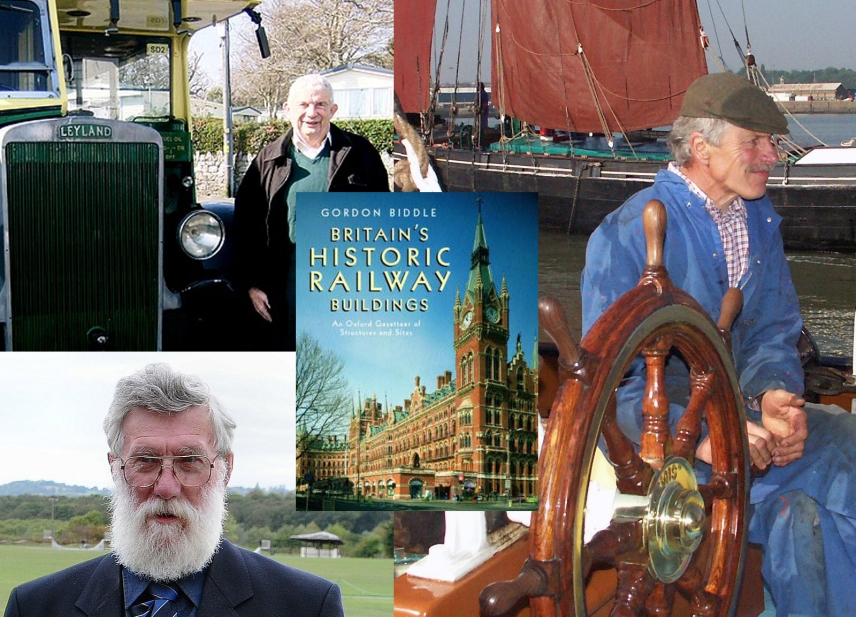
Gordon Biddle
Gordon Biddle is a retired Surveyor who has devoted his expertise to the subject of transport infrastructure and has made a major contribution to increasing awareness of the importance of this aspect of transport, and of conserving it.
Gordon achieved recognition as an expert on our industrial and commercial architectural inheritance with a book entitled ‘The Victorian Railway Station’, published in 1976.
This was the first major study of the development of railway architecture. In 1985 Gordon became an advisory panel member of the Railway Heritage Trust, set up
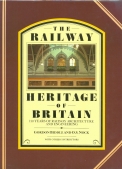
by BR in the previous year, and led by our President, Sir William McAlpine. This has made a major improvement to the quality of railway infrastructure by harnessing both railway and local authority interest in conservation.
He did not confine his interests to railways. He was a founder of member of the Railway and Canal Historical Society and has written eleven books on canal and railway history. In addition to his writings, he has personally led the conservation railway viaducts in the north of England.
Gordon was joint editor with Professor Jack Simmons of the Oxford Encyclopaedia of Railway History and his literary efforts have culminated in a massive study of railway infrastructure entitled ‘Britain’s Historic Railway Buildings’, published by Oxford in 2003, and in a second edition, last year.
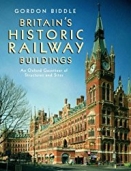
The importance of this work in the cause of heritage preservation is enormous. If ther
e are no records of what is out there, it is hard to know what needs to be conserved. This work not only records, but it also comments and provides argument for conservation, or not. It is a priceless archive, and a monument to flawless effort. It has also been of immense help to those running the Red Wheel scheme!
John Baylis
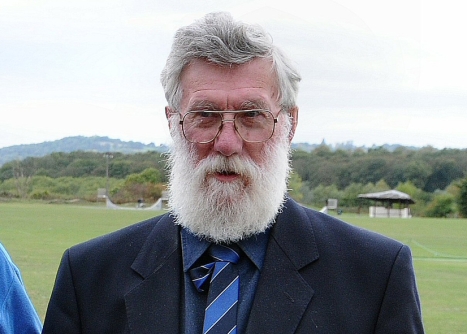
John joined the Inland Waterways Association in 1969 and very quickly became involved in getting things done, such as the restoration of Morse Lock on the Chestefield Canal and the subsequent formation of the Chesterfield Canal Society. In 1980 he was persuaded to become Chaiman of the East Midlands region of the IWA on a temporary basis, which lasted for 30 years. He moved on to the restoration of Frankton Locks on the Montgomery Canal, and became Vice Chairman of the Waterways Recovery Group. He has headed IWA subcommittees looking after navigation, safety and technical matters and is a Trustee of the Friends of the Cromford Canal.
By no means just a committee man, John is very much hands on: he has designed and produced lock winding mechanisms, which have been adopted by British Waterways. In 2011 he received the IWA’s Cyril Styring Trophy, the Association's premier award given to the IWA member who has, in the opinion of the IWA trustees, made an outstanding contribution to further the Association's campaign. And on top of more than 40 years service to inland waterways he still finds time to cover many canal miles annually in his own boat.
Colin Shears
Colin Shears was brought up in Exeter where he developed his interest in buses, road haulage and all forms of transport. He has a strong claim to being the first single individual to acquire a bus for preservation, a 1938 Exeter Corporation Leyland Tiger TS8, No. 66, with an unusual single deck Craven body with an open rear platform.
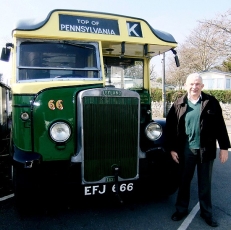
This was in 1956, the same formative year in which other well known pioneers in transport preservation, including Prince Marshall, Michael Dryhurst and Ken Blacker clubbed together to preserve London Transport T31. Colin took 66 with him to Cirencester where he attended the Royal Agricultural College. Here he met like minded individuals and 66 provided transport for many exploits across the country searching for old vehicles. The collection started to grow and, after leaving Cirencester, Colin landed a job at the motor taxation office. Here, no doubt, he worked diligently but, when he left after a few months, he had added substantially to his encyclopedic knowledge of the whereabouts of interesting old vehicles, which has been invaluable to the preservation movement over the following half century.
A list of all 76 known preserved buses and coaches published in 1961 showed Colin owning no fewer than 9, second only to the BTC / LT collection of 16 vehicles. Storage is always a problem and in 1962 Colin acquired a site at the former RAF Winkleigh airfield in North Devon. This includes a standard T2 type wartime hanger with space for around 70 buses as well as substantial external parking and other smaller buildings. This showed massive foresight in such early days. Colin’s collecting habit became self perpetuating but he was always open to a reasonable offer so many of the vehicles in the collection were passed on and fully restored. He has owned in excess of 200 vehicles over the intervening period and given safe haven to many more.
Colin has always welcomed visitors to the collection and the first public open day was held in 1965. Ever since, the annual pilgrimage to Winkleigh, now organised by Colin’s son Daniel, has attracted thousands of enthusiasts and West Country folk bringing their buses, coaches, lorries, vans, agricultural tractors and steam engines, but it still retains its informality. Colin has made an enormous contribution by saving and ensuring the continuing existence of so many important and often unique vehicles which now form a significant proportion of the ‘national road transport collection’.
Peter Dodds
Mirosa is an 82ft Thames sailing barge, built in 1892 by John Howard of Maldon. She is of the type nicknamed ‘stackie’ built specifically for carrying hay and straw to the horses in London from the Essex meadows.
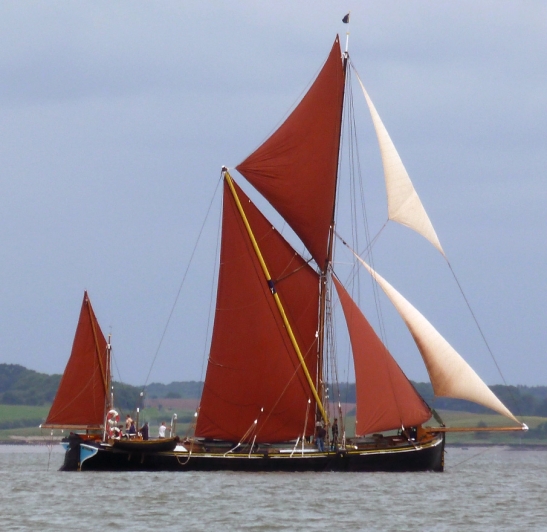
Peter and Sally Dodds bought Mirosa in 1976 though Peter had crewed on her since 1970 so he has now been involved in 42 winter restorations followed by the spring ‘rig out’. For many years she was unique in not having an engine, although in the last few years she has been joined by 2 other unmotorised sisters. They lived on the barge for the first 20 years of ownership, tackling the next most pressing restoration project each winter and sailing her to try and earn some of her upkeep each summer.
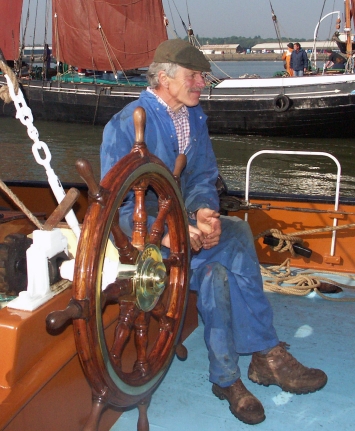
Rot caused by leaking decks had set in with a vengeance. Over the years they have had to replace more than half of the Essex boatbuilder’s work while in her winter berth at Faversham. This necessitated creating a boat yard with the facilities she needed – dry-dock, cranes, saws etc. Peter and Sally have turned themselves into self taught shipwrights, enabling them to replace – for example – all but 2 deck planks, the 14x14 inch 75ft internal keelson running nearly the length of the vessel, the entire inner lining of the hull and much much more, all done whilst living aboard!
During the summer months Mirosa gets put to work, now carrying people who want to experience her charms, rather than her hay and straw cargoes. 42 years service to the preservation of 1 vessel: a Lifetime Achievement indeed. Read more about the restoration
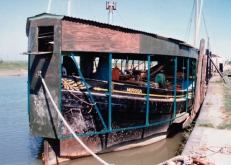
The National Transport Trust makes loans to groups, associations and individuals at advantageous rates for the restoration of artefacts - whether mobile or part of the infrastructure. Applications must be supported by a simple business plan which demonstrates the financial viability of the project. A sample business plan is available on request from the Treasurer.
The Trust does occasionaly make Awards for schemes which further the preservation movement. Again if you wish further information please contact the Treasurer.